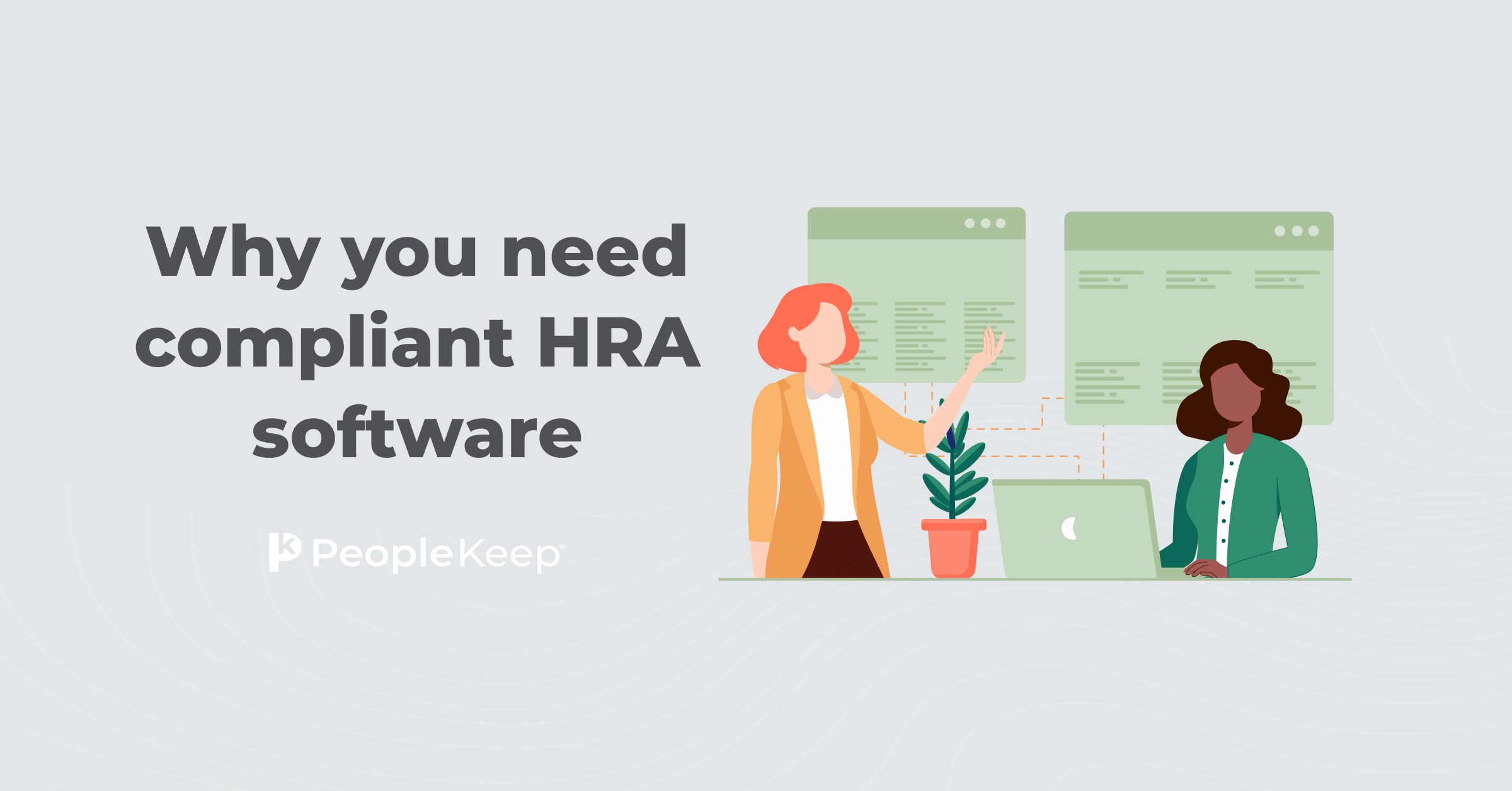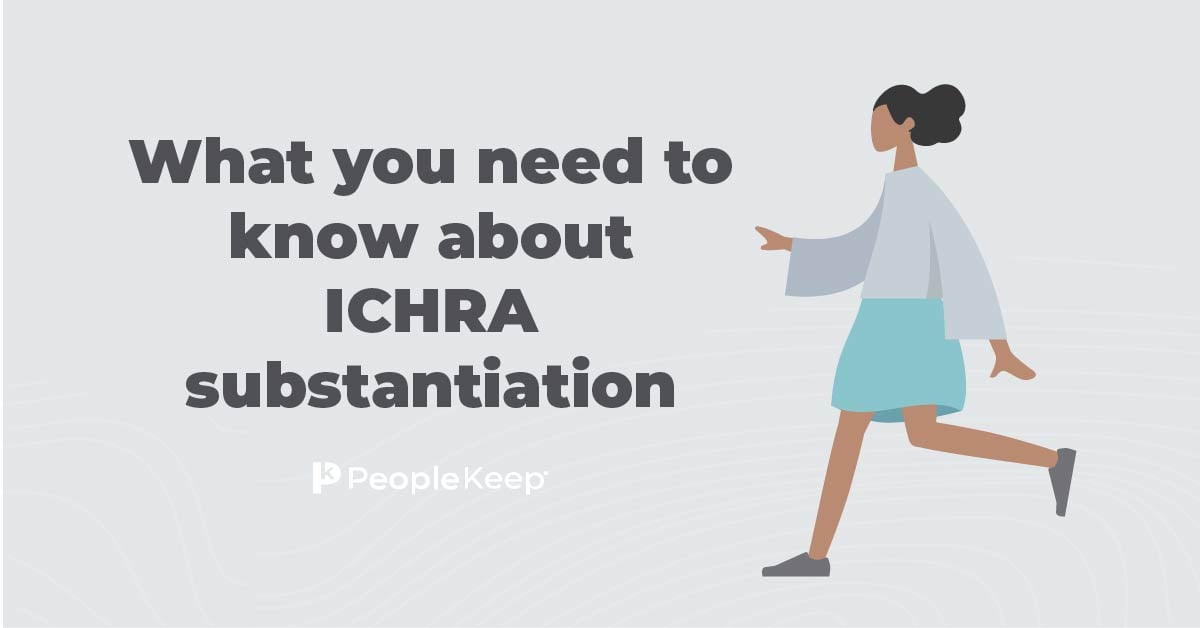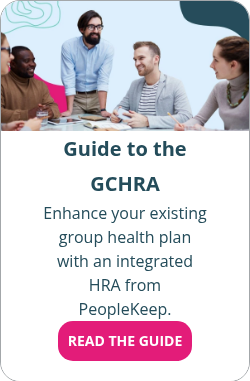7 group coverage HRA rules to know
By Holly Bengfort on February 21, 2024 at 6:00 AM
Health reimbursement arrangements (HRAs) have become an increasingly popular healthcare benefit option for employers. While many employers offer an HRA instead of a traditional group health plan, others implement a group coverage HRA (GCHRA) to work alongside a group policy.
If you want to supplement your group health insurance with a GCHRA, you need to know the rules and regulations. Understanding the rules can help you make informed decisions and avoid costly mistakes.
In this article, we'll outline the seven key rules to know when it comes to GCHRAs so you can confidently offer this personalized benefit.
Takeaways from this blog post:
- The group coverage HRA (GCHRA) is a tax-free reimbursement method for employers to cover healthcare expenses not fully paid by their traditional group health plan.
- Employers considering GCHRAs need to be aware of eligibility requirements, qualified expenses, employee classes, allowances, deductibles, cost-sharing requirements, and substantiation requirements.
- There are multiple types of HRAs to consider along with the GCHRA, including the qualified small employer HRA (QSEHRA), individual coverage HRA (ICHRA), and excepted benefit HRA (EBHRA).
What is a GCHRA?
With the rising cost of traditional group health insurance, employers often choose to switch to a higher deductible health plan to make the most of their healthcare dollars. However, this can result in increased out-of-pocket medical expenses for employees.
Offering a group coverage HRA (GCHRA), also known as an integrated HRA, alongside an HDHP (or any group health plan) can help bridge the gap between offering a high-quality health benefit and minimizing both health insurance premiums and out-of-pocket costs.
A GCHRA is a tax-free reimbursement method for employers to cover healthcare expenses not fully paid by the group plan.
Here's a quick breakdown of how it works:
- Employers set a monthly or annual allowance amount.
- Employees make purchases using their own money.
- Employees submit proof of their eligible medical expenses to their employer or HRA administrator with their request for reimbursement.
- Employers review eligible medical expenses and reimburse employees up to their allowance amount.
What are the benefits of a GCHRA?
Offering a GCHRA provides several benefits for employers and employees. It can help businesses save on healthcare costs while still providing valuable health plan coverage for their workforce.
GCHRA reimbursements are free of payroll taxes for employers and free of income taxes for employees. Plus, unlike a pre-funded health savings account (HSA), a GCHRA only requires employers to pay employees when they incur an eligible expense, so any unused funds stay with the employer. Employers can also customize a GCHRA to meet the needs of their workforce.
A GCHRA helps employees afford the medical care they need. It also enables them to choose how, when, and where they spend their HRA funds. This empowers them to make their own healthcare decisions.
Additionally, a GCHRA can help support recruitment and retention efforts. According to PeopleKeep's 2022 Employee Benefits Survey Report, 82% of employees say that the benefits package an employer offers is an important factor in whether or not they accept a job. Traditional group health insurance is a popular way for employers to provide health benefits, and adding a GCHRA to the mix can make it even more attractive.
Overall, a group coverage HRA provides flexibility and cost savings for both employers and employees when it comes to healthcare benefits.
What you need to know if you're considering a GCHRA
There are certain rules and regulations that employers need to be aware of when offering GCHRAs. Here are seven crucial rules to know:
1. Eligibility requirements
The GCHRA is for organizations of all sizes that currently offer traditional group health insurance. Employers can only offer a GCHRA to employees enrolled in employer-sponsored coverage. Employees who decline the employer's health plan coverage aren't eligible for the HRA. Unlike an HSA, it doesn’t matter if the plan has a high deductible or not.
The group plan must meet the Affordable Care Act’s (ACA) standards, such as providing minimum value and minimum essential coverage (MEC). The group plan also can’t consist of only excepted benefits, such as vision or dental coverage.
2. Qualified expenses
Group coverage HRAs can only reimburse employees for qualified medical care expenses that the Internal Revenue Service (IRS) defines in Publication 502. The CARES Act added additional eligible expenses starting in 2020.
These expenses can include:
- Copays
- Prescription drugs
- Over-the-counter medicine
- Preventive services
- Mental health counseling
- Other healthcare-related costs, such as out-of-pocket costs before employees reach their group plan’s deductible
A unique feature of the GCHRA is that employers can require employees to submit an explanation of benefits (EOB) before they reimburse expenses. This feature limits eligible expenses to only those your health insurance carrier covers if enabled.
3. Employee classes
With a GCHRA, employers can divide their workforce by employee classes. Employee classes are a way of separating employees into groups by job-based criteria, such as full-time employees. Employers can offer different allowance amounts to different classes of employees. There are no minimum employee class size requirements.
Learn more about employee classes with a GCHRA.
4. Allowances
Employers can offer their employees as little or as much as they like. There's no annual limit on how much employers can contribute to a GCHRA. However, employer contributions must be uniform for everyone within the same class of employees. If employees don't use their entire allowance, unused amounts stay with the employer.
5. Deductibles
The GCHRA allows employers to choose whether employees should contribute a set amount of money before they reimburse them through their HRA. There's no maximum dollar limit on the deductible amount. Although not mandatory, this option can be beneficial in saving costs when there are budgetary constraints.
6. Cost-sharing requirements
Similar to coinsurance on an insurance plan, employers may also require employees to cover a percentage of any medical expenses they incur. You can set the percentage anywhere from 0% to 99% based on what you can afford.
7. Substantiation requirements
The IRS has special rules for pre-tax health benefit plans to show that employees used the funds for medical expenses. Employees do this by providing proof of purchase.
Proof of purchase can include:
- A receipt
- An invoice
- An explanation of benefits (EOB) statement
If the employer approves the request for reimbursement, it proceeds to the next step in the process: paying the reimbursement.
With an HRA, employers can reimburse employees in the following ways:
- Payroll
- Direct deposit
- Check
- Cash
The IRS requires employers to maintain records of all HRA reimbursements processed and issued during the tax year. These records should include information on requests received, associated documentation, and whether or not they approved or declined the request for reimbursement.
Other HRA types to consider
If the GCHRA isn't right for you, there are other forms of HRA coverage to consider.
Qualified small employer HRA (QSEHRA)
The qualified small employer HRA (QSEHRA) is a stand-alone HRA for small businesses with fewer than 50 full-time equivalent employees (FTEs). Employers offering a QSEHRA can’t offer a group plan of any kind. The QSEHRA is intended to cover the cost of employees’ individual health policies and can also reimburse employees for the coverage they have through a parent or spouse. A QSEHRA can reimburse employees for individual health insurance premiums, out-of-pocket costs, or both.
Individual coverage HRA (ICHRA)
The individual coverage HRA (ICHRA) works for employers of all sizes. Instead of providing employees with employer-sponsored group health plan coverage, the ICHRA allows employers to reimburse employees for individual health insurance rather than buying it for them. It empowers employees to pick an individual health insurance plan that works best for them. An ICHRA can reimburse employees for qualifying individual health insurance premiums, out-of-pocket costs, or both.
Excepted benefit HRA (EBHRA)
Like the GCHRA, the excepted benefit HRA (EBHRA) is an option employers can leverage to supplement an existing group health plan. With this form of HRA coverage, employers can reimburse employees for premiums paid towards certain excepted benefits and other eligible out-of-pocket medical care expenses.
Some excepted benefits include:
- Dental insurance premiums
- Vision insurance premiums
- Cancer insurance premiums
- Disability insurance premiums
- Workers compensation insurance
- Accident-only coverage
How PeopleKeep can help
If you choose to self-administer an HRA, you take on all of the responsibilities of managing the health benefit without any outside help. That means your organization is fully liable for compliance issues with the IRS, the Health Insurance Portability and Accountability Act (HIPAA), and the Employee Retirement Income Security Act of 1974 (ERISA).
When you offer an HRA through PeopleKeep, we handle the hassle for you. Our experts create your legal plan documents, verify employee expenses, and automatically send required notices on your behalf.
With our easy-to-use software and award-winning customer support, you can manage your health benefit in just minutes each month.
PeopleKeep offers the following types of HRAs:
- The GCHRA
- The ICHRA
- The QSEHRA
Conclusion
It's important for employers who are considering implementing group coverage HRAs (GCHRAs) to understand these seven rules. By adhering to the regulations set forth by the IRS and other governing bodies, employers can ensure compliance and provide valuable healthcare benefits to their employees. Consulting with a qualified benefits professional or legal advisor can further assist employers in navigating the intricacies of GCHRAs.
Ready to offer a GCHRA to your team? Schedule a call with a personalized benefits advisor now!
This blog post was originally published on June 9, 2020. It was last updated on February 21, 2024.
Check out more resources
See these related articles

Why you need compliant HRA software
Learn why compliant HRA administration software is essential. Ensure proper setup, reimbursements, and IRS compliance with the right tools.

What you need to know about ICHRA substantiation requirements
Learn the steps employers need to take to ensure employees and their dependents participating in the individual coverage HRA (ICHRA) are properly insured.

HRA administration: What features to expect from your provider
Discover the key features of HRA administration. Learn what to expect from your provider to ensure smooth setup, compliance, and employee support.



